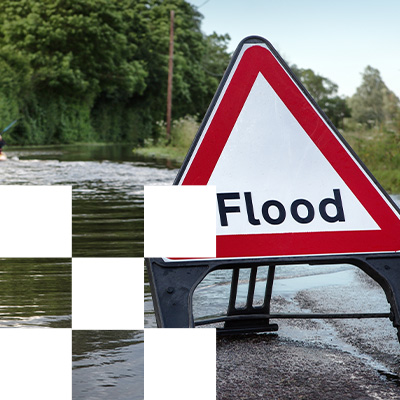The Role of the Geospatial Sector in Driving ‘Net Zero’
According to the recent Cabinet Office and Geospatial Commission policy paper, “Location data is the coal and iron fuelling a new revolution.”
As a fundamental part of this “new revolution”, location data, also known as ‘geospatial’ data, has become a vital commodity to both governments and organisations alike. Geospatial data enhances decision making; from driving economic recovery and business intelligence, to gaining detailed developmental insight. The true value of this data - as well as the challenges that it has the potential to solve - is growing exponentially year by year.
As part of the Geospatial Commission’s five-year geospatial strategy, one of the major goals is to unlock, promote, and safeguard the use of location data. This collaborative and open approach will enable innovation and improve access to better location data. It will also enhance capabilities, skills, and awareness.
At Emapsite, we believe that through this collective effort, the geospatial sector can be pivotal in unlocking invaluable insights that can also help tackle climate change and drive to ‘net zero’ emissions.
What is ‘net zero’ exactly?
In the context of this post, ‘net zero’ – also known as carbon neutral – is about achieving a balance between carbon emissions created during a process, with the equivalent emissions being removed. Zero emissions may be unrealistic for many projects. In its wider scope, however, the goal of the net zero initiative is to provide reliable long-term solutions for sustainability, by meeting key environmental objectives such as minimising fossil fuel usage and switching to renewable sources, clean air and water, reducing or eliminating waste sent to landfill, and ensuring the long-term viability of resources.
How can the Geospatial Sector help in driving towards net zero?
The use of geospatial technology and location data has enormous potential in driving efficiencies and connectivity across multiple sectors, helping, in turn, to drive net zero.
Being a long-standing member of the geospatial sector ourselves, we’ve already seen the impact that our location data has had across industries, such as energy, infrastructure, land and property. From reducing site wastage and ensuring its reallocation, to coordination of roadworks supported by informed remote planning - negating unnecessary travel.
The UK Government’s ‘Environment Bill 2020’ – currently in its third reading in the House of Lords - was drafted to ensure environmental issues were placed front and centre in future decision making by both central and local government. It also incorporates new statutory demands on various planning processes. One new concept facing all developers is that of biodiversity net gain; where a biodiversity value of a site is established. A plan is put in place to ensure there is a net gain in biodiversity as part of the project. Before commencing development, a property developer will soon need to submit a biodiversity net gain plan to planning authorities as part of their application. It will then be up to the planning authorities to insist that all applications demonstrate how the biodiversity value has been calculated, how the net gain target will be achieved, and how the scheme contributes to the overall diversity of the site.
Geospatial data - from data gathered from aerial and satellite imagery, to datasets on land cover and geographically referenced census information - will be key in compiling this information.
This new process aims to benefit the environment at a macro level by insisting on gains at a very local level. It’s not just about having green space. Developers struggling to demonstrate a net gain can potentially offset their required quotas by investing in offsite designated habitat areas of biodiversity – so called ‘habitat banks’. Although still a nascent space, the HM Land Registry have been reported to be already supporting this initiative through conservation covenants that can be applied to land, ensuring its use for the purpose of conservation and habitat offsetting for the long term.
The new legislation will very likely open up a whole new market for location data and geospatial solutions to make a positive environmental impact through key net zero processes.

What do Emapsite perceive to be the biggest challenges, and the key enablers, to achieving net zero?
From our perspective, one of the biggest challenges to achieving net zero using geospatial data, is overcoming so called ‘siloed’ networks – segregated systems without the free flow of data.
By enabling more seamless interoperability of systems and available data, it becomes possible to take on a more unified approach of information sharing. In short, we believe that more available data means more insight, and more insight means more solutions to net zero challenges.
The Ordnance Survey, working with government departments, have been busy creating open identifiers called ‘Unique Property Reference Numbers’ (UPRNs) - unique identifiers for every addressable location in Great Britain, together with other identifiers based on the building outlines from their Mastermap detailed mapping product. These identifiers and their locations are known as open identifiers. This means there are no intellectual property restrictions on using them on their own.
By using UPRNs and other open identifiers as a common identifier, you can then improve overall efficiency by making it faster and easier to connect data sources across different platforms. This also removes duplication, in turn aiding economic recovery efforts and net zero goals.
More can be achieved with wider use of UPRNs and other identifiers. They have already proven to be a highly beneficial use case of geospatial data. One of the most recent examples is the Welsh Government’s use of the identifiers to coordinate its response to supporting its most vulnerable citizens following the Covid-19 outbreak in 2020.
How will Emapsite deliver on net zero, both as an organisation, and for their customers?
At Emapsite, we’ve chosen to migrate all our computing to a Cloud provider committed to carbon offsetting to help achieve our own net zero goals. We’re also committed to automating and streamlining processes and systems to limit energy usage for ourselves and our customers.
Additionally, our products and solutions are also designed to accelerate our customers’ goals in seeking to achieve net zero. We partner directly with companies to optimise the use of their assets, reducing waste and impact on the environment, through innovative leveraging of enriched location data.
Referenced Cabinet Office and Geospatial Commission policy paper, ‘Unlocking the Power of Location: The UK’s geospatial strategy 2020 to 2025’
Latest News

Future-proofing Assets Against Flooding in Britain
A recent investigation by The Guardian has revealed a sobering reality: millions more properties across Britain are now at risk of flooding as climate change intensifies. This makes it more crucial than ever to act - and to ensure those actions are guided by reliable, high-quality data.
Read Full Article-
Why address data is the unsung hero in the UK’s new-build recovery
Read Full Article -
Decoding the OS National Geographic Database: A Game-Changer for Utilities
Read Full Article
